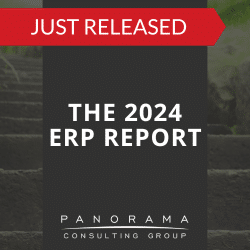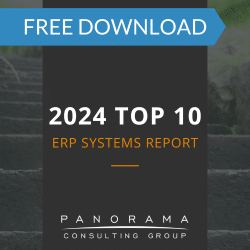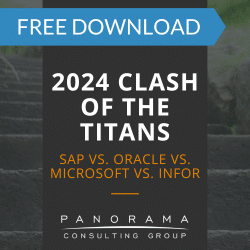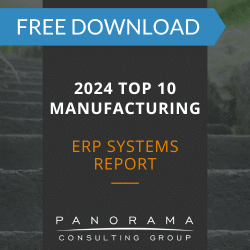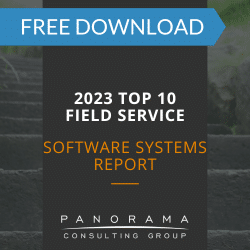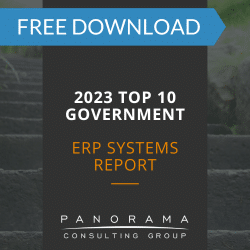When you’ve been a software expert witness on as many ERP failure cases as we have, it’s impossible to have a “fairy tale” view of ERP software. Sure, it can be a knight in shining armor, but it can also be a fire-breathing dragon.
Today, we’re sharing some ERP pros and cons so you can learn how to avoid ERP failure by making the most of the potential benefits and avoiding the potential drawbacks.
Cons of Implementing an ERP System
Considering the benefits that an ERP system can provide, the following drawbacks shouldn’t necessarily dissuade you from implementing ERP. However, you do need to be aware of these drawbacks so you can make an effort to avoid them.
1. High Initial Costs
The high cost of an ERP system can be a lot to process. In addition to the initial integration, you may also have to pay ongoing subscription fees, as well as any licensing costs associated with the software and technology.
Depending on the size of your company, it can be cost-prohibitive to implement, operate, and maintain an ERP system over time.
On-premise ERP solutions require the support of your IT team and have associated infrastructure costs. These expenses can quickly add up, becoming even harder to navigate as your company evolves and expands.
A cloud model can have lower upfront costs, but these costs accumulate over time as you’re paying an ongoing subscription fee.
A Failed Payroll System Implementation
Panorama’s Expert Witness team was retained to provide a forensic analysis and written report to the court regarding the failed implementation of a major software developer’s ERP/payroll system.
2. Costly and Complex Customization
Some companies choose to implement their ERP system right out of the box, making no changes to its baseline functionality or source code. However, many companies customize their solution to some extent to meet their unique business needs.
Small-scale changes can be manageable, but the process can quickly snowball. Without strong project management and governance, customizations can become overly expensive and time-consuming.
3. Implementation Roadblocks
When implementing an ERP system, most companies encounter challenges that threaten to derail their efforts. With proper project management, most of these problems can be avoided.
For one, the project team must work with many different stakeholders throughout the project. These team members are spread across various departments and each department naturally has its own pain points it wants to address. In short, achieving strategic alignment can be a challenge.
Even with strategic alignment, you will encounter implementation challenges, such as
data migration complexities and employee resistance to change.
Overlooking these challenges can derail your project. In fact, many businesses underestimate how long the implementation process will take or how much it will cost.
Pros of Implementing an ERP System
Some of the most successful and profitable companies in the world count enterprise resource planning (ERP) systems among their most essential technologies. Here are some of the top reasons why.
1. Real-Time, 360-Degree Visibility
An ERP system gives you a real-time view of your operations. As it consolidates data across departments, it provides actionable analytics and a single source of truth that aid in decision-making.
For example, many of the top ERP systems offer AI-powered insights. These systems can predict outcomes based on real-time data, enhancing strategic decision-making and leading to increased efficiency.
2. Automates Manual Functions
ERP software automates manual business processes across your organization by centralizing data and streamlining tasks. Automating everything from accounting to human resources boosts efficiency, reduces human error, and eliminates redundant manual data entry.
Ultimately, ERP allows employees to focus on strategic activities, fostering a more data-driven business environment.
For instance, an ERP system can automatically update inventory levels as soon as a sale is processed, trigger reorder points for stock replenishment, and generate financial reports in real-time.
3. Simplifies Supply Chain Management
ERP for manufacturing companies can manage end-to-end supply chain processes. This includes everything from raw material sourcing to production, order fulfillment, and shipping.
With customer relationship management (CRM) functionality, an ERP system can go one step further, helping manufacturers manage all aspects of their sales and customer relationships. This simplifies sales orders and accelerates the lead-to-cash journey.
The integration of IoT and blockchain technology with ERP software also enhances supply chain management. These technologies enable real-time tracking and improved inventory management.
For example, by integrating blockchain technology into its ERP system, a pharmaceutical company could achieve end-to-end traceability of drug distribution, significantly reducing counterfeit risks and ensuring compliance with global regulations.
Understanding the Pros and Cons of ERP
For some, the benefits of an ERP system outweigh the drawbacks. For others, the challenges are just too significant to surmount.
Before moving forward with an ERP implementation, it’s important to analyze all these ERP pros and cons with your project team. Together, you can decide if the time is right to change your technology.
Along the way, our ERP consultants can help you obtain the expertise and resources you need to make ERP a possibility for your company. Contact us below for a free consultation.








